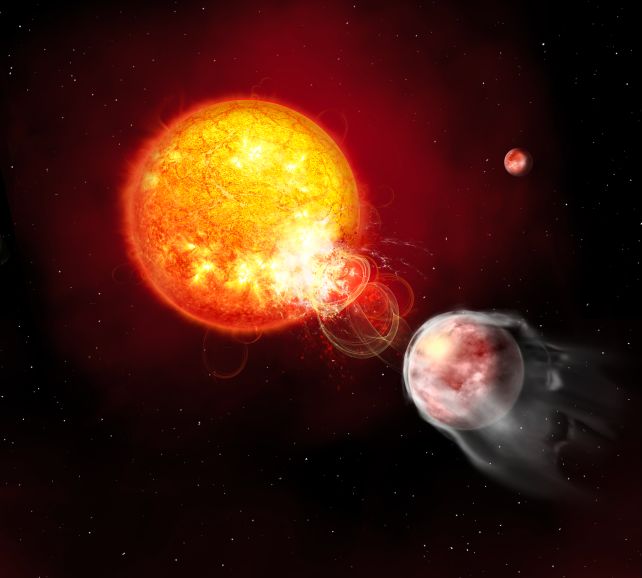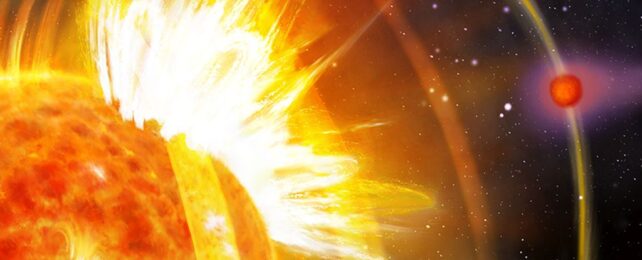A planet that is snuggled up closely with its host star may be igniting colossal flares that strip it of its own mass.
In a first-of-its-kind observation, astronomers have found a giant exoplanet in such a close orbit with its star that its presence is disturbing the star's magnetic field – causing it to erupt furiously, lashing the space around it with radiation.
These outbursts pummel the exoplanet in turn, causing it to lose its puffy atmosphere at an accelerated rate.
"We've found the first clear evidence of magnetic star-planet interaction, where a planet triggers energetic flares on its host star," says astrophysicist Ekaterina Ilin of the Netherlands Institute for Radio Astronomy. "What's particularly exciting is that this interaction has persisted for at least three years, allowing us to study it in detail."
Related: Mysterious Radio Signals From Distant Stars Suggest The Presence of Hidden Planets

Previously, astronomers had thought that stars were pretty independent and unassailable by anything as small as a planet, but a growing body of evidence suggests that this might not be the case. A Sun-like star named HIP 67522, and its exoplanet HIP 67522b, offer pretty conclusive evidence.
The system is located around 408 light-years away, and is just 17 million years old – a mere toddler in star terms, with all the tempestuousness that implies. The exoplanet, which clocks in around the width of Jupiter but just 5 percent of its mass, whips dizzyingly fast around the star once every 6.95 days.
As it does so, the planet's magnetic field appears to interact with the star's magnetic field. It gathers energy as it orbits, periodically unleashing it towards the star along its magnetic field, like the crack of a whip that awakens a giant flare directed right at HIP 67522b. The researchers cataloged 15 flares in the direction of the exoplanet in five years of observations.

"The planet seems to be triggering particularly energetic flares," Ilin says. "The waves it sends along the star's magnetic field lines kick off flares at specific moments. But the energy of the flares is much higher than the energy of the waves. We think that the waves are setting off explosions that are waiting to happen."
They calculated that HIP 67522b is receiving six times more radiation than it would if the planet wasn't pestering its host star. Because the exoplanet is so puffy and wispy, these flares are probably heating the atmosphere and causing it to leak out into space like a deflating balloon: it could be as small as Neptune in as little as 100 million years.
The next step, the researchers say, is to find other such systems out there in the Milky Way to try to get a better grasp on this never-before-seen phenomenon.
The research has been published in Nature.
